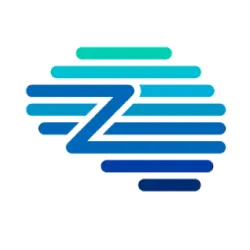TL;DR
- Procurement Overload in Emerging Enterprises is common—small teams manage enterprise-level complexity, often with just one or two generalists.
- These lean teams face burnout, missed savings, and rising compliance risks due to a lack of tools and bandwidth.
- Strategic outsourcing, modular automation, and targeted KPIs can drive enterprise-grade outcomes without increasing headcount.
- Results include 70% cycle time reduction, 15–30% savings via outsourcing, and 90%+ spend visibility with lean P2P.
- Zycus empowers small teams to scale impact with intelligent intake, AI-driven sourcing, and real-time procurement analytics.
Scaling Spend, Shrinking Bandwidth: The Mid-Market Procurement Crisis
You’ve crossed $200 million in revenue. Your spend complexity mirrors that of a $2B enterprise; software licenses, packaging materials, professional services, facilities management. But your procurement “team”? One person. Maybe two. Neither with “procurement” in their job title.
One person managing enterprise-level complexity. Sounds familiar?
You’re not alone. 70% of emerging enterprise still operate without a formal procurement function. Finance managers become reluctant negotiators, operations lead juggle supplier relationships, even EAs find themselves sourcing critical materials all without proper tools, benchmarks, or category expertise.
Meanwhile, supplier counts climb exponentially, compliance risks multiply. Every contract, every PO, every high-stakes negotiation still flows through the same overworked few. The results?
- 71% of mid-market teams can’t locate 10%+ of their contracts. Auto-renewals slip by unnoticed, costing up to 9% in leakage and 50% in renewal premiums. Margin disappears—quietly.
- 80% of spend happens outside procurement oversight. Without systems or policies, tail spend 20% in savings? Gone with a corporate card swipe.
These aren’t anomalies. They’re symptoms of structural overload.
Lean Procurement Teams vs. Enterprise Complexity: The Impossible Math
Here’s the paradox: emerging enterprises operate with fewer than 15 procurement FTEs per $1B in revenue, that’s less than 1.5 per $100M managing $50–$100M in spend, 8–12 categories, and 50–100 suppliers.
Enterprise companies distribute this workload across entire departments. In the emerging-market? It’s a single heroic individual. The expectations?
- Deliver 10x your salary in savings
- Prevent maverick spend
- Ensure compliance
- Streamline buying cycles
- Support growth
The pressure is relentless. And it shows:
- PO approvals average 15 days; onboarding stretches to 90. No bandwidth = no velocity.
- 52% of procurement professionals in mid-market teams report burnout. One-person teams don’t bend. They break!
Generalists Under Siege: The Hidden Cost of Wearing Five Hats
Generalists seem agile in theory. In practice, they’re drowning.
As revenue scales, procurement should evolve from generalist-led to specialist-driven. But in emerging market? Budgets rarely support it, ou can’t justify hiring a packaging expert for a $5M category. Finance won’t approve a facilities specialist for $8M in spend.
So generalists stay and they get systematically crushed.
- Monday: IT licensing negotiations.
- Tuesday: legal services RFP.
- Wednesday: packaging quality issues.
- Thursday: supplier onboarding delay.
- Friday: chasing approvals across departments.
Enterprise firms assign dedicated category teams. Emerging-market teams juggle them all. At $200M–$400M revenue, 60%+ of procurement remains generalist-driven. In enterprises, specialists handle 80% of strategic categories.
The financial impact?
- 15% overspend on raw materials due to missed benchmarks.
- 2–3% of category spend lost per missed opportunity.
- 40% higher cost when emergency hiring is used to plug the inevitable gaps.
The playbook that worked at $50M becomes a liability at $200M. You’re not scaling. You’re suffocating.
Emerging Enterprise Procurement Playbook: Scale Impact, Not Headcount
The truth is, emerging-market procurement doesn’t have a talent gap; it has a scale trap.
Your one or two-person team isn’t failing; it’s being asked to deliver enterprise outcomes with startup resources. But here’s what the smartest mid-sized companies have realized: you don’t need a bigger team. You need a smarter model.
They’re solving the One-Person Army Paradox by reengineering how they work, not just trying to do more with who they have.
Here’s What Works
Automate Before You Add Headcount
Before you petition for another hire, eliminate the manual work. Procurement automation for mid-market teams – Lean P2P and intake systems can wipe out 70% of tactical effort, turning one FTE into the output of five. From approvals to vendor onboarding, Intelligent intake management frees your team to focus on strategy, not survival.
Use the 1,000 PO Rule
When you hit 1,000 purchase orders or $15M in spend, that’s your cue to expand. That’s when category specialization starts delivering ROI. Until then? Focus on automation and strategic design.
Apply the 70/30 Rule to Outsourcing
Keep high-value, high-impact categories in-house. Outsource tail spend, tactical sourcing, and compliance audits. Most mid-market firms see 15–30% cost savings just by shifting the executional burden externally.
Track Performance Like a Team, Even If You’re One Person
You don’t need headcount to show impact. You need the right metrics:
| Metric | Industry Benchmark |
| PO Cycle Time | < 48 hours |
| Spend Under Management | > 80% |
| Managed Spend per FTE | $30–50M |
| Approval Cycle Reduction | > 30% improvement |
Benchmarking these KPIs proves procurement isn’t a bottleneck—it’s a leverage point.
The Takeaway: It’s Not About Headcount. It’s About Leverage
The One-Person Army isn’t a failure; it’s a signal. Emerging-market procurement leaders aren’t falling short. They’re overwhelmed by enterprise-level complexity with startup-level resources.
But the paradox is solvable.
You don’t need 10 people to manage $100M+ in spend. You need modular automation, targeted outsourcing, and systems that turn effort into impact.
That’s exactly how AAMC unlocked scale without expanding headcount.
“It continues to be a great tool to augment the small staff we have—especially with contracting. It’s freed up a lot of time.”
— Abbie, AAMC
They didn’t just survive. They designed for leverage—and turned a small team into a strategic engine. With Zycus, teams like AAMC prove that lean procurement isn’t a limitation, it’s an opportunity.
Don’t hire for growth. Architect for it. Let’s flip the paradox together.
Related Reads:
- The Ultimate Guide to Accounts Payable Software for Emerging Enterprises
- Smart Procurement Software for Emerging Markets
- The Essential Guide to Procurement Software for Emerging Enterprises
- Procurement Scaling in Emerging Markets: Why Systems Fail Just as Growth Takes Off
- The Adoption Deficit: Solving the Procurement Change Challenge in Emerging Enterprises








































